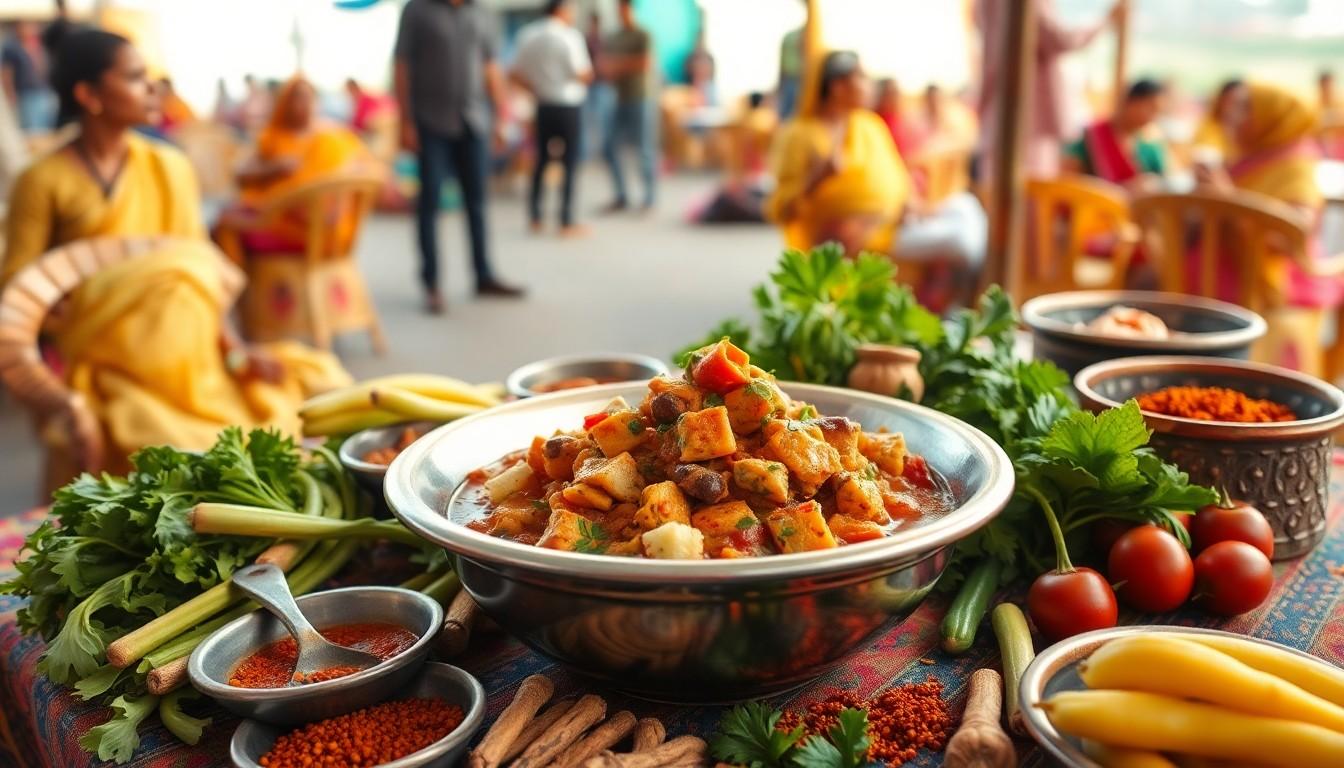Phone:
(701)814-6992
Physical address:
6296 Donnelly Plaza
Ratkeville, Bahamas.

In a world where culinary adventures often lead to bland experiences, “sàttamatta” emerges as a vibrant hero ready to spice things up. This delightful dish isn’t just a meal; it’s a celebration of flavors that dance on the palate, leaving taste buds begging for more. Imagine a plate that transports you to a bustling market filled with aromas and laughter—sàttamatta does just that.
Sàttamatta stands out for its rich blend of spices and fresh ingredients. This dish features a variety of vegetables, herbs, and proteins, showcasing culinary diversity. Traditionally prepared using techniques passed through generations, it embodies cultural significance. Flavor profiles often include savory, tangy, and slightly spicy notes, capturing the essence of its origins.
In many vibrant markets, the preparation of sàttamatta happens in full view of eager customers. Chefs often emphasize local sourcing, enhancing freshness and supporting community agricultural practices. Diners frequently enjoy sàttamatta as a main course or side, providing versatility across meal occasions.
Presentation plays a crucial role in the sàttamatta experience. Colorful ingredients, arranged artfully, create an enticing visual appeal. Eating sàttamatta not only satisfies hunger but also invites an exploration of flavors from various regions.
Culinary enthusiasts praise sàttamatta for its adaptability. Home cooks easily modify the dish using seasonal vegetables or personal preferences. Authentic recipes may vary from one household to another, reflecting individual cooking styles while still honoring tradition.
A growing interest in sàttamatta has led to its presence in restaurants worldwide. Chefs often incorporate elements from traditional preparations while introducing innovative twists. This continued evolution ensures sàttamatta remains a relevant and beloved dish in contemporary cuisine.

Sàttamatta carries deep historical roots that shape its vibrant character.
Sàttamatta traces its origins to ancient cooking traditions, where local communities relied on available ingredients for sustenance. These early preparations incorporated unique spices and vegetables, reflective of the region’s agricultural bounty. The dish emerged as a staple in communal gatherings, signifying abundance and hospitality. Families often shared recipes, blending cultural influences, which contributed to sàttamatta’s distinct flavor.
Time transformed sàttamatta, leading to variations that showcased regional ingredients. It adapted to modern culinary trends while retaining its traditional essence. Influences from global cuisines have enriched its flavor profile, while chefs experiment with innovative interpretations. Contemporary diners experience sàttamatta in diverse settings, from street food stalls to upscale eateries, ensuring the dish remains cherished across cultures. Its evolution highlights the balance of tradition and modernity, allowing it to thrive in an ever-changing culinary landscape.
Sàttamatta significantly permeates various aspects of culture, reinforcing its importance in community and tradition.
Sàttamatta appears prominently in literature, often symbolizing connection and celebration. Authors frequently reference this dish to evoke vivid imagery of communal gatherings. Characters bond over meals laden with sàttamatta, illustrating the dish’s role in nurturing relationships. Its presence in poetry and prose highlights themes of hospitality and cultural heritage. Notable works capture the aroma and vibrancy of sàttamatta, inviting readers to immerse themselves in the shared culinary experience.
Sàttamatta inspires artists and musicians, manifesting in various forms of creative expression. Visual artists depict its colorful presentation in paintings and illustrations, emphasizing the dish’s aesthetic appeal. Musicians incorporate references to sàttamatta in lyrics, celebrating its significance in social gatherings. The sound of sizzling ingredients often echoes in street performances, reflecting lively cooking traditions. This dish fosters a sense of community, becoming a symbol of joyful moments and artistic inspiration.
Sàttamatta evolves continuously, reflecting contemporary culinary practices and preferences. Chefs incorporate local ingredients and innovative techniques to keep the dish relevant.
Chefs today embrace sàttamatta by utilizing seasonal produce, adapting recipes to highlight freshness. Many restaurants serve it in creative presentations, ensuring visual appeal alongside flavor. Home cooks also experiment, personalizing the dish with unique spice blends or contemporary substitutes. Various dining establishments offer sàttamatta as part of tasting menus, showcasing its versatility. Street food vendors feature it as a quick, flavorful option, appealing to busy city dwellers. This adaptability speaks to the ongoing popularity of sàttamatta, drawing attention from food enthusiasts and casual diners alike.
Sàttamatta appears frequently in literature and art, symbolizing community and connection. Many authors portray characters sharing meals laden with sàttamatta, emphasizing its role in fostering relationships. Musicians often reference the dish in songs, celebrating its cultural significance. Social media has played a key role in spreading awareness, with vibrant images of sàttamatta inspiring home cooks globally. These representations highlight its status as more than food, elevating it to a symbol of joy and togetherness across diverse platforms.
Sàttamatta represents more than just a dish; it embodies a rich cultural narrative that connects people through shared experiences. Its vibrant flavors and diverse ingredients reflect a deep-rooted tradition while adapting to modern culinary trends. This dish continues to inspire chefs and home cooks alike, fostering creativity and community.
As sàttamatta gains popularity worldwide, it serves as a reminder of the importance of culinary heritage and the joy of sharing meals. Whether enjoyed at a bustling market or a fine dining restaurant, sàttamatta remains a celebration of taste and togetherness, making it a cherished staple in global cuisine.